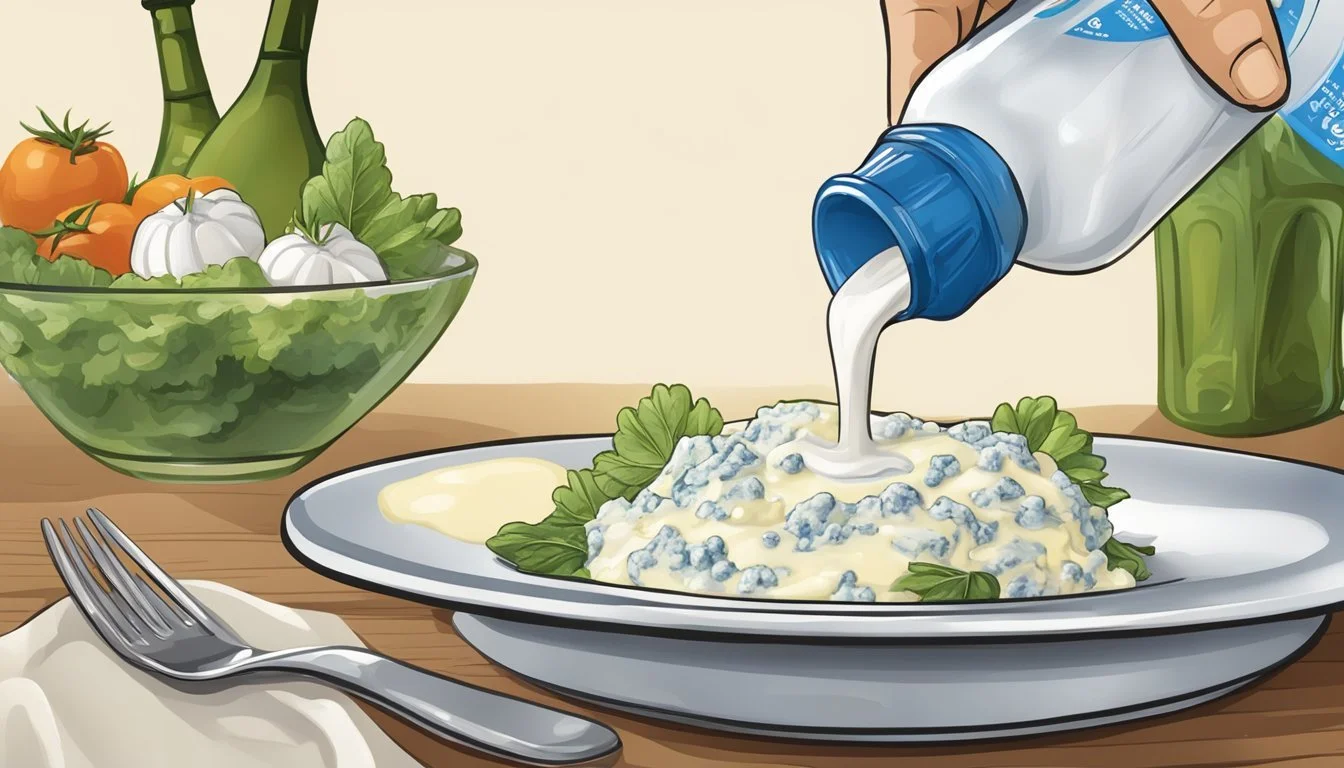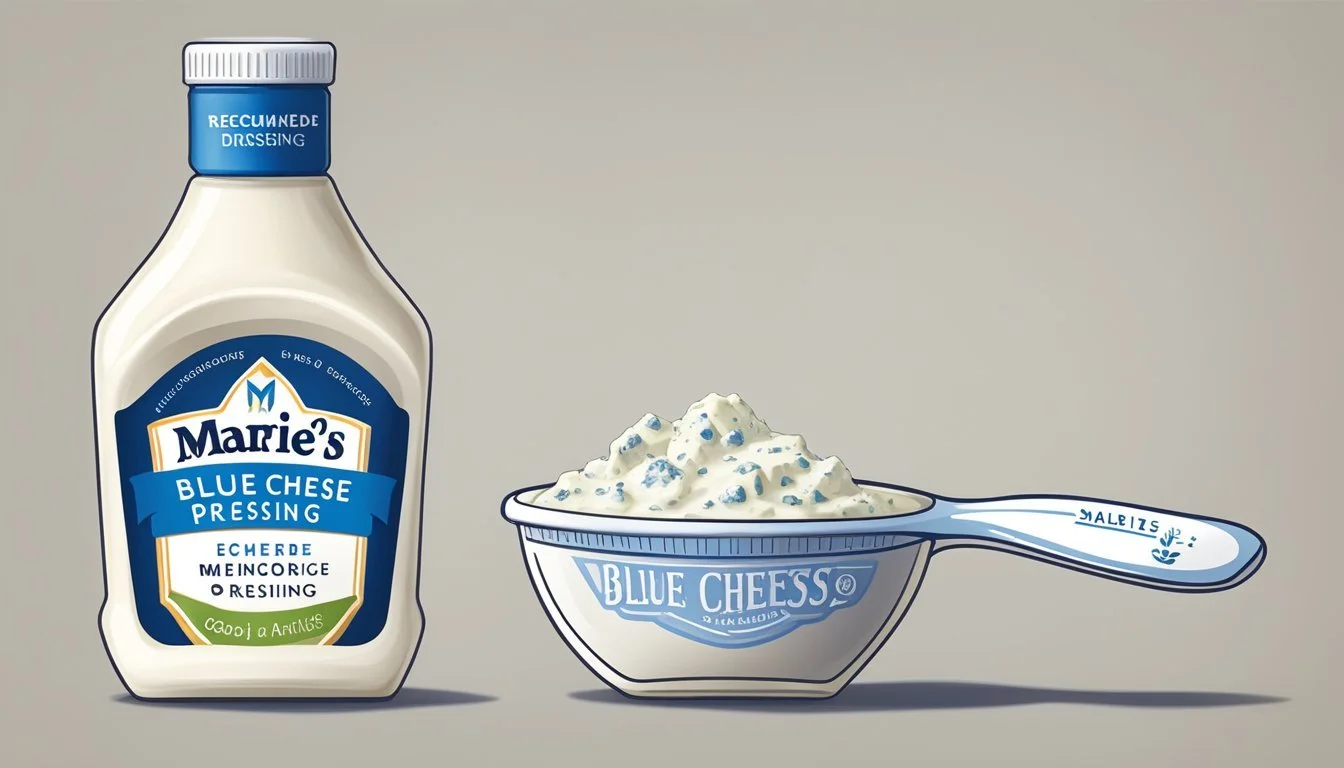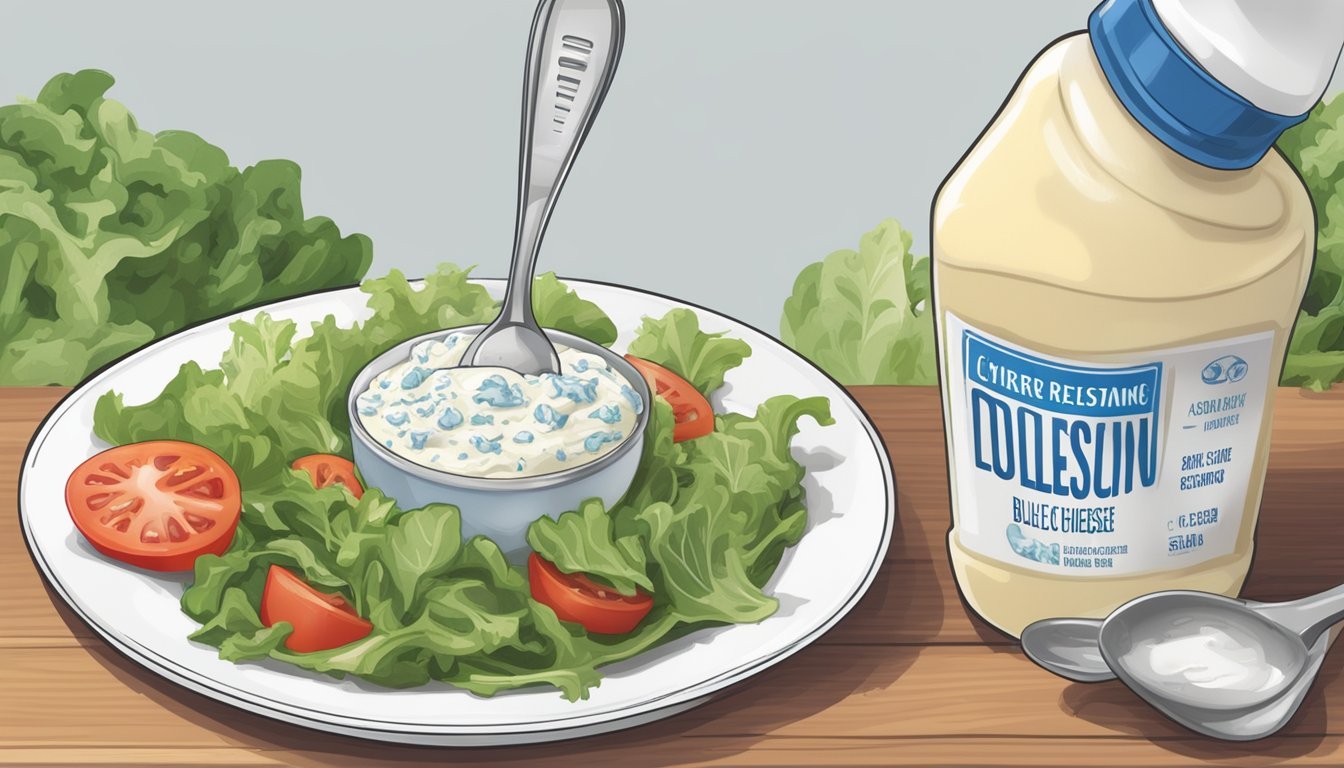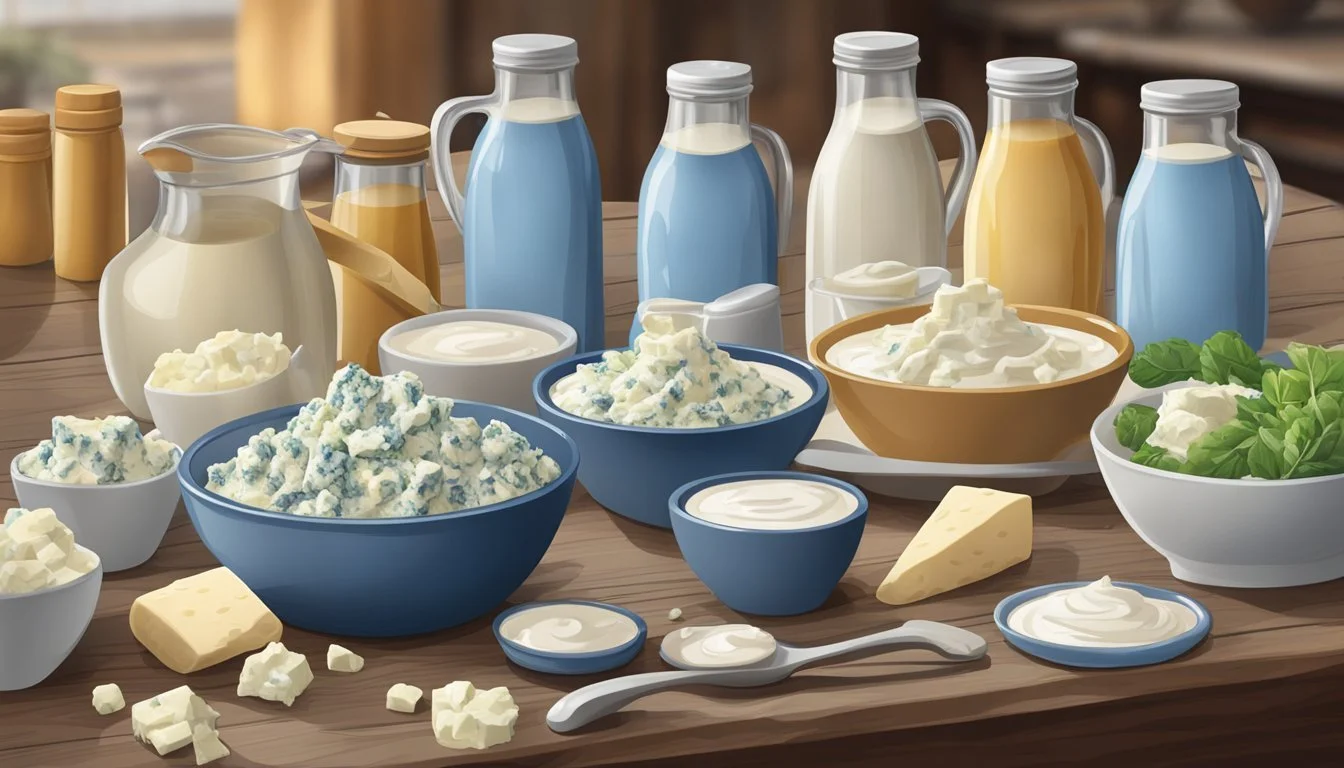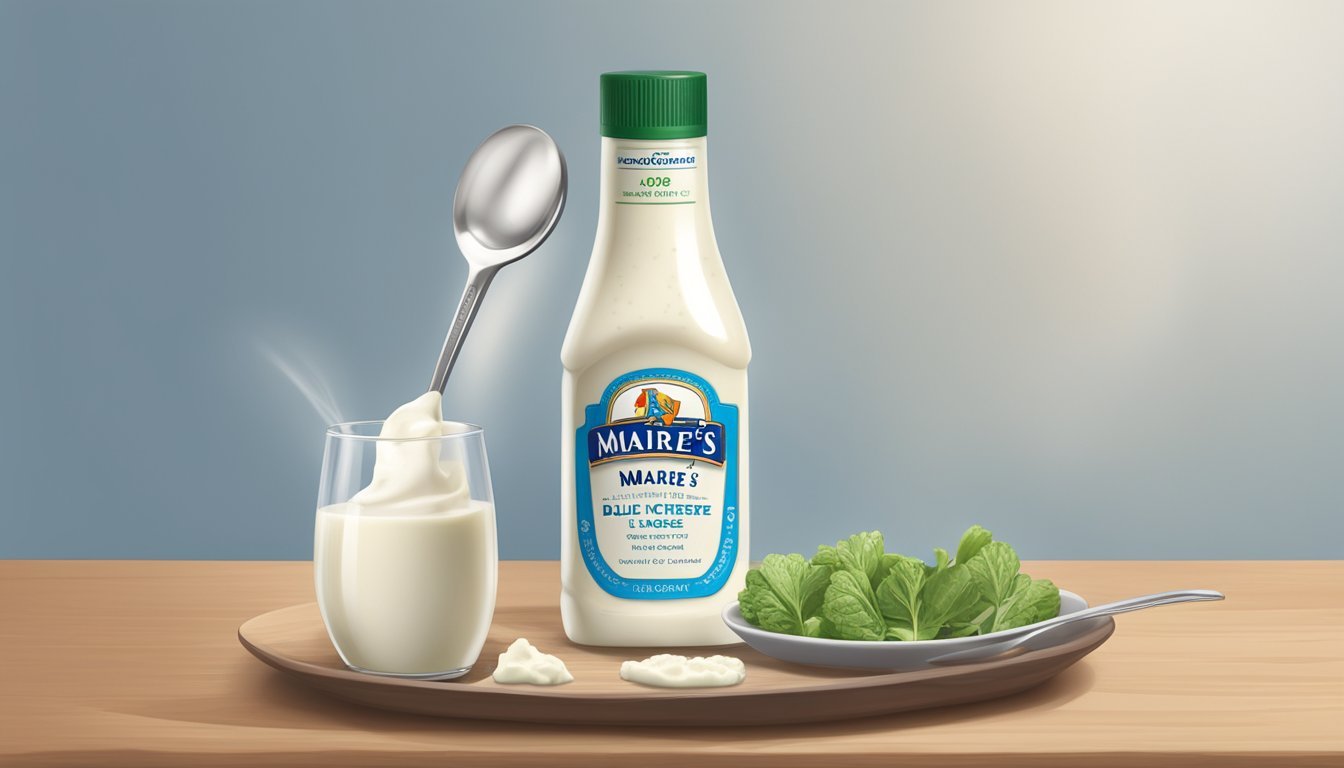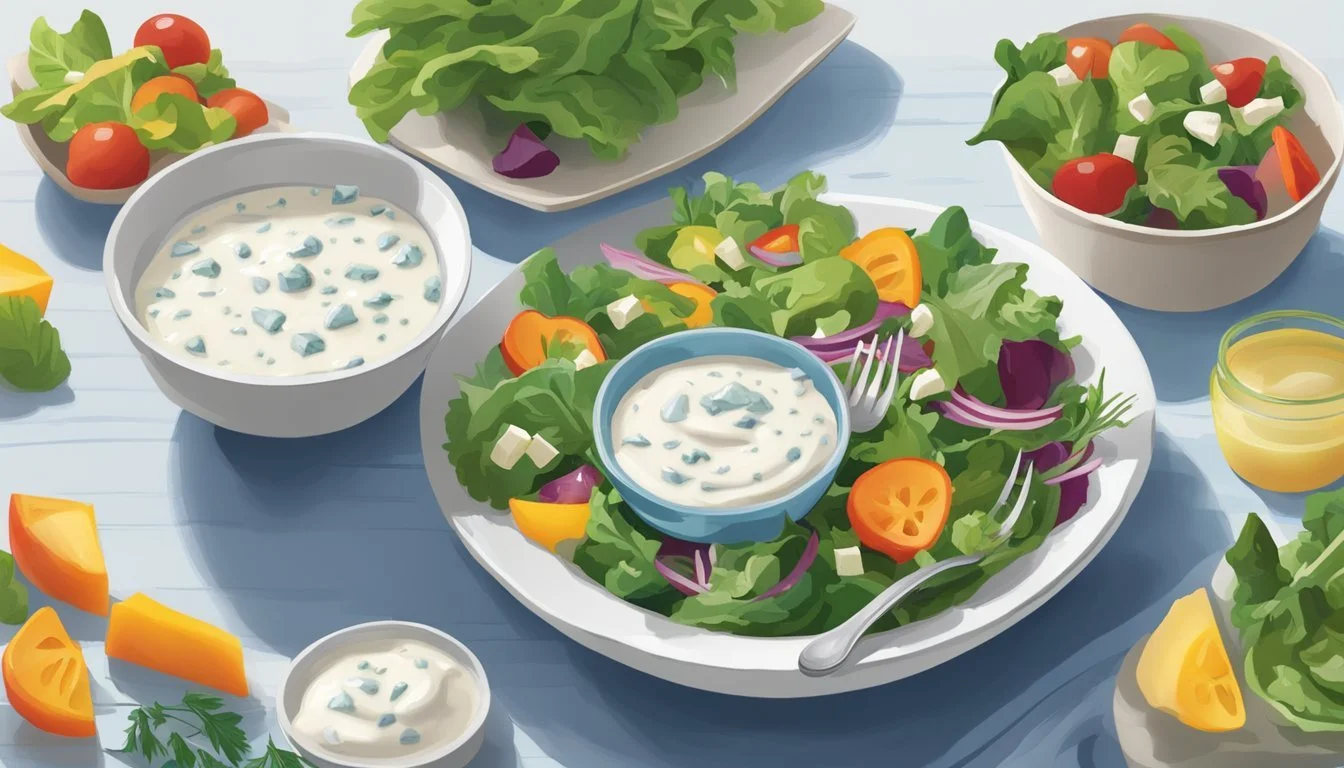How Much Marie's Blue Cheese Dressing Per Day Is Excessive
Daily Limits Explained
When considering the consumption of Marie's blue cheese dressing, or any salad dressing, understanding its nutritional content is key to determining an appropriate daily amount. Marie's Chunky Blue Cheese dressing, a product popular in America for its generous chunks of blue cheese and rich flavor, contains 160 calories per serving with a serving size defined as two tablespoons. The dressing's nutritional profile also indicates percentages of daily values based on a 2,000 calorie diet, which is a common benchmark for daily nutrient recommendations.
While blue cheese dressing adds a flavorful kick to salads and can be used as a dip for vegetables, moderation is important due to its caloric density and sodium content. The dressing's indulgent quality comes with a significant calorie count, which can add up quickly if used in large quantities. Furthermore, it's necessary to consider the overall dietary pattern and how the consumption of such dressings fits into an individual's total daily nutritional needs. Too much of any high-calorie food product can contribute to excessive calorie intake and potential weight gain.
In light of this, individuals looking to include Marie's blue cheese dressing in their diet should pay attention to not just the calories but also to other nutritional aspects such as sodium, cholesterol, and added sugars. The detailed nutrition information provided on the label serves as a guide for consumers to make informed choices about the quantities they consume in relation to their total daily food intake. Balancing taste preferences with nutritional awareness is essential for maintaining a health-conscious diet.
Nutritional Profile of Blue Cheese Dressing
Marie's Chunky Blue Cheese Dressing provides a rich flavor profile that is often used to enhance salads and other dishes. Nutritionally, this dressing is high in fats, particularly saturated fat given its cream-based ingredients. Nutritional data can vary slightly, but a commonly cited figure is 160 calories per 2 tablespoons serving, with a significant portion of these calories coming from fat.
The dressing contains ingredients like chunks of blue cheese, vinegar, and sometimes sugars for taste enhancement. It is typically low in protein and fiber, with 1 gram of protein reported per 2 tablespoons serving, and fiber content being negligible.
Sodium levels can be relatively high, influencing the daily intake limits; consumers should be mindful, as high sodium consumption is often linked to increased blood pressure. The total carbohydrate content tends to be low, around 1 gram per serving, with dietary fiber not a significant contributor. Total sugars are also minimal, often less than 1 gram per serving, with no added fibrous material to counteract the intake of fats.
When considering vitamins and minerals, blue cheese dressing is not a significant source of vitamin A, calcium, iron, potassium, vitamin D, or other vitamins and minerals. Some nutrients like vitamins can be present in trace amounts depending on the brand and specific formulation but are usually not sufficient to make a substantial dietary contribution.
To sum it up, the primary nutritional considerations with Marie's blue cheese dressing are its calorie, fat—particularly saturated fat—, and sodium content. It's low in carbohydrates, protein, and fiber, and should be consumed in moderation, especially within a diet that aims for a balance of nutrients.
Recommended Serving Sizes
In the context of an overall diet, Marie's blue cheese dressing should be consumed in moderation according to the serving size recommendations on the product label.
Understanding Serving Sizes
The serving size for Marie's blue cheese dressing, as stated on the product label, is 2 tablespoons (28g). Given that the average dressing contains around 160 calories per serving, it is essential to consider this in the framework of a daily diet of 2,000 calories. The % Daily Value on the nutrition facts label helps consumers understand how a particular food contributes to their daily nutritional needs.
Marie's Blue Cheese Dressing Nutritional Facts:
Serving Size Calories per Serving % Daily Value* 2 tbsp (28g) 160 Based on a 2,000 calorie diet
*Dressing nutritional profiles may vary. Consumers should check the label for the most accurate information.
Dressing to Salad Ratio
When dressing a salad, it's advisable to stick to the 2 tablespoon serving size. One should aim for a balance where the dressing complements the salad without overwhelming it. To keep the calorie intake within a healthy range, individuals may consider the calorie content of the dressing in relation to their entire meal and overall daily calorie limit.
*Note: The above information is provided with the understanding that individual dietary needs can vary. Users should consult their healthcare provider or a nutritionist for personalized advice.
Health Implications of Overconsumption
Eating too much Marie's blue cheese dressing can contribute to several health issues due to its high calorie and fat content. Paying close attention to serving sizes is essential to mitigate the potential negative health effects.
Impact on Heart Health
Marie's blue cheese dressing contains saturated fat, with some products detailing as much as 3.5 grams per 2 tablespoon serving. Regular intake of high levels of saturated fat can increase the risk of heart disease by elevating cholesterol levels. Additionally, the presence of sodium in dressings, sometimes reaching 210mg per serving, should be monitored as it can contribute to high blood pressure, a risk factor for cardiovascular complications.
Obesity and Caloric Intake
The caloric density of Marie's blue cheese dressing is notable, with servings ranging from 130 to 160 calories for just 2 tablespoons. Consistently consuming such calorie-dense condiments without accounting for them in daily caloric intake can lead to weight gain over time. For individuals on a standard 2,000-calorie diet, a single serving of blue cheese dressing can represent up to 8% of their daily caloric quota. Excessive caloric intake is a contributing factor to obesity, which carries its own set of health concerns, including an increased risk for type 2 diabetes, heart disease, and certain cancers.
Blue Cheese Dressing Varieties
Blue cheese dressing comes in various forms, ranging from indulgent commercial varieties with sizable cheese chunks to health-conscious alternatives using lighter ingredients.
Commercial Dressings
Commercial blue cheese dressings, such as Marie's Chunky Blue Cheese and Marie's Super Blue Cheese, cater to those looking for rich, creamy flavors with real chunks of blue cheese. They are typically available in containers providing multiple servings, with nutrition labeling indicating a caloric content of roughly 160 calories per serving. Customers select these dressings for their convenience and robust taste, although they are often higher in calories and fat content.
Marie's Chunky Blue Cheese: Contains generous chunks of blue cheese and has around 12 servings per 12 oz. container.
Marie's Super Blue Cheese: Features a larger amount of blue cheese chunks and is presented as a premium option, also serving about 12 servings per container.
Healthy Alternatives
For individuals mindful of their dietary intake, alternative blue cheese dressings that incorporate lighter ingredients are a viable option. These include dressings made with yogurt or olive oil, which lower the calorie and fat content. A homemade version of blue cheese dressing might use Greek yogurt as a substitute for sour cream or mayonnaise, introducing more protein and less fat while keeping the characteristic tangy flavor of blue cheese. These alternatives are typically more favorable for daily consumption due to their improved nutritional profiles.
Yogurt-Based Blue Cheese Dressing: By swapping out high-fat ingredients with yogurt, this version cuts down on calories while maintaining a creamy consistency.
Olive Oil-Based Blue Cheese Dressing: Olive oil can be used to create a vinaigrette-style dressing, giving a lighter, more fluid texture with healthier monounsaturated fats.
Dietary Considerations
When determining how much Marie's Blue Cheese dressing to consume daily, individuals need to consider potential allergens, the presence of dairy, and whether the dressing fits into their specific diet plans.
Allergens and Intolerances
Marie's Blue Cheese dressing contains dairy ingredients, such as buttermilk, skim milk, and cultured nonfat milk, which may pose concerns for individuals with lactose intolerance or dairy allergies. Moreover, cheese culture, another component of the dressing, is also a dairy product. Those with egg allergies should be cautious as dressings can sometimes include egg-derived ingredients.
Suitability for Different Diets
The dressing may be suitable for someone following a diet that incorporates healthy fats, as it includes ingredients like soybean oil and avocado oil. However, due to its high-fat content and potential inclusion of dairy components, it might not align with low-fat or dairy-free diet preferences. It's also worth noting that while the dressing can add flavor, those managing calorie intake should use it sparingly due to its calorie density.
How to Incorporate Blue Cheese Dressing Responsibly
Blue cheese dressing can be a flavorful addition to a variety of foods, from salads to buffalo wings (What wine goes well with buffalo wings?). The goal is to enjoy the rich, natural flavor of real blue cheese without overindulging, considering the dressing's high calorie count.
Balancing Indulgence and Nutrition
When incorporating blue cheese dressing into one's diet, moderation is key due to its high caloric content. Marie's blue cheese dressing, for example, contains 160 calories per serving. To maintain a balanced diet, individuals should consider the following:
Use Sparingly: A tablespoon or two on a salad can add flavor without excessive calories.
Pair with Nutritious Foods: Drizzle the dressing on leafy greens, vegetables, or use as a dip for chicken strips to combine indulgence with nutrition.
Check Portion Sizes: Always read the label to identify the serving size, and try to stick to that amount.
Making Informed Choices
Selecting Marie’s blue cheese dressing can be a part of a well-informed diet choice when considering food pairing and the benefits of the ingredients.
Ingredient Quality: Look for dressings with simple ingredients, including real blue cheese and natural flavors.
Consider the Food: Adding the dressing to nutrient-rich salads can provide variety while still adhering to a nutrient-dense diet.
Understand Nutrition: Recognize that, although tasty, blue cheese dressing should be viewed as a complement to a dish rather than the main event, due to its nutritional profile.
Reading and Understanding Food Labels
When selecting products like Marie's blue cheese dressing, reading the food label is crucial for making informed choices. Nutrition Information on the label provides a breakdown of what's inside per serving, facilitating a balanced diet.
Ingredients are typically listed in descending order by weight. For dressings, expect to see various ingredients, including types of cheese, oil, and seasoning. Checking this list serves those with dietary restrictions or allergies.
The Total Fat content is measured in grams, and it's essential to distinguish between healthy fats and those less beneficial to health. Saturated Fat, in particular, should be consumed in moderation, as high intake can increase the risk of heart disease.
Sodium levels are also expressed in milligrams. High sodium consumption is associated with elevated blood pressure and should be limited. The Added Sugars section identifies sugars that are not naturally occurring in the product but have been added during processing.
Accurate and updated nutrition facts are more than just numbers—they're a guide to understanding calorie intake and nutrient contribution towards daily values. Here, the label will also indicate how many servings are in each product package, and the calories per serving—critical information for managing portion sizes and overall caloric intake.
By carefully reading the label, consumers can avoid excessive consumption and choose dressings that fit their nutritional needs. Reliable accurate information on the food label empowers them to make healthier choices.
Where to Buy Quality Blue Cheese Dressing
When looking for quality blue cheese dressing, consumers have several options. Marie's Salad Dressing is known for its authentic, fresh flavor and can typically be found in the refrigerated produce section of grocery stores. The brand specifically advises using a Product Locator to find stores carrying their products. One of their popular dressings, Marie's Chunky Blue Cheese, is favored by many for its generous chunks of blue cheese.
Grocery Stores: Most carry a variety of salad dressing brands, including blue cheese varieties. Marie's dressings are refrigerated, so shoppers should head to the produce section rather than the salad dressing aisle.
Online Retailers: Consumers can purchase blue cheese dressings from online marketplaces. However, due to refrigeration needs, they should ensure the seller supports proper shipping.
Health Considerations: When selecting a blue cheese dressing, individuals may want to review nutritional information, as some dressings can be high in calories and sodium. For example, one serving of Marie's Chunky Blue Cheese contains:
Calories: 160
Sodium: 240mg
Sugars: 0g
Popular Options:
Marie's Super Blue Cheese
Marie's Chunky Blue Cheese
Remember, when selecting a blue cheese dressing, assess the quality of the ingredients and the taste you prefer. Checking product reviews can also guide you to make a satisfying choice.
Making Your Own Blue Cheese Dressing
Creating homemade blue cheese dressing allows for the flexibility to adjust flavors and ingredients according to personal preference. Utilizing simple ingredients, individuals can craft a version that's both fresher and more satisfying than store-bought varieties.
DIY Dressing Benefits
Making blue cheese dressing at home offers several benefits. Firstly, it provides control over the quality and types of ingredients used, such as sourcing high-quality cheese cultures and fresh sour cream. This also allows adjustment of salt and spices to suit individual dietary needs and flavor profiles. Furthermore, a homemade version eliminates the presence of preservatives and additives often found in commercial dressings.
Recipe Tips and Ideas
To craft a blue cheese dressing, begin by selecting the core components:
Creamy Base: Start with a mixture of mayonnaise and sour cream for a rich foundation. For a healthier alternative, yogurt can be substituted to reduce calories and add a tangy flavor.
Flavor Enhancers: Mince or grate fresh garlic for a powerful flavor kick. Incorporate vinegar to introduce acidity which balances the creaminess, and olive oil can be whisked in for a smoother consistency.
Blue Cheese: Opt for high-quality cheese with active cheese cultures and lactic acid for an authentic taste. Crumble it finely or leave chunks for texture according to preference.
Spices & Seasonings: Incorporate salt, pepper, and other spices or herbs like green onion to layer the flavors.
Here's a simple guide:
Whisk together equal parts of mayonnaise and sour cream until smooth.
Stir in 2 teaspoons of vinegar (adjust to taste).
Add minced garlic—around one clove's worth—to the mixture.
Season with salt and pepper; consider a pinch of sugar to round out the flavors.
Gently fold in crumbled blue cheese, keeping some larger pieces for texture.
For additional flavor, mix in finely chopped green onion or other desired spices.
Allow the dressing to rest in the refrigerator, letting the flavors meld together.
Remember, when creating a homemade dressing, one can experiment with the ratios and ingredients to produce a final product that is uniquely tailored to their palate.
Conclusion
When considering the consumption of Marie's blue cheese dressing, moderation is key. Health guidelines suggest that condiments should be used sparingly within a balanced diet. Marie's blue cheese dressing has about 160 calories and a notable amount of sodium and saturated fat per serving.
For healthy eating, individuals should keep an eye on the daily caloric intake and nutritional balance of each meal. Specifically, the 2015-2020 Dietary Guidelines for Americans recommends that less than 10% of daily calories come from saturated fat, and to limit sodium intake to less than 2,300 milligrams per day as part of general nutrition advice. Hence, incorporating Marie's blue cheese dressing into one's diet calls for attention to these limitations.
Given that a single serving is 2 tablespoons, consumers may easily exceed these recommendations with generous servings. It is advisable to use the dressing as a flavor enhancer, and not as a main ingredient.
To maintain a pattern of healthy eating, consumers should:
Measure servings carefully
Balance intake with other foods throughout the day
Opt for a variety of nutrient-rich foods
Remember, food choices play a crucial role in personal well-being, and one must align their dietary patterns to accommodate general nutrition advice. Thus, when indulging in the rich flavors of Marie's blue cheese dressing, be cautious not to compromise nutritional goals.

